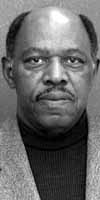|
Subscribe / Renew |
|
|
Contact Us |
|
| ► Subscribe to our Free Weekly Newsletter | |
| home | Welcome, sign in or click here to subscribe. | login |
Architecture & Engineering
| |
June 15, 2006
Architect, 'life mentor' Mel Streeter dead at 75
Journal Staff Reporter

As a black architect, Streeter opened doors for other minorities and worked with some of the city's best known architects.
“His office was probably one of the best training grounds and entry points for many Seattle architects, not just those of color,” said Donald King of the Seattle architecture firm DKA. “That was due to Mel's openness in looking to have people from diverse backgrounds.”
Streeter is known for projects such as Auburn City Hall, the Federal Aviation Administration Regional Headquarters at Boeing Field and several buildings at Naval Station Everett.
Four Streeter & Associates Architects' senior associates, Sam Cameron, Gregory Hill, Indra Jain and Jim Kressbach, will be promoted to principals.
Streeter's oldest son and architect, Doug Streeter, and the new principals will become owners of the firm. The firm specializes in cultural and educational facilities, as well as transit and housing.
In 1967, Streeter opened the first black-owned architecture firm in Seattle, after working for architect Fred Bassetti. He was a 1955 architecture graduate from the University of Oregon.
He went on to play an important role in inspiring young architects as well as young athletes.
Streeter mentored youth from minority and disadvantaged backgrounds, and helped college students who wanted to break into the field.
He was a founding member of the AIA Seattle Diversity Roundtable, which has a goal of bringing minorities into the profession and helping architecture students.
“He was always upbeat and positive,” said David Fukui, who served on the Diversity Roundtable with Streeter. “I can't overemphasize the fact that whenever he saw you he had a big smile.”
Paul Dermanis, who met Streeter when he worked for Bassetti in 1964, became a partner in Streeter's firm in 1972. The firm was re-named Streeter Dermanis at that time.
“He was very people oriented and enjoyed meeting people and was always out making new contacts,” said Dermanis, who worked with Streeter until 1996. “He was easy going. He liked to stay involved in the broader aspects of the projects.”
A lot of the firm's early work was small public sector projects, according to Steve Arai of Arai Jackson Ellison Murakami.
Arai met Streeter in 1968, and Streeter gave him his first job after graduating from the UW. The two lived a few blocks away from each other on Phinney Ridge. Arai was friends with Streeter's four children and wife, Kathleen.
“He was sort of my life mentor — not just as an architect but how to live your life,” said Arai.
They worked in an office at Bellevue Avenue and Denny Way. Early commissions were the Jefferson Community Center and the 80,000-square-foot FAA headquarters at Boeing Field.
Dave Miller of Miller/Hull joined Streeter Dermanis in 1972 and stayed for about two years.
“At that time, the small, young design firms were really at their peak, and Mel's firm was a big part of that,” said Miller. “It was great to be there, because of the energy that was going on in Seattle.”
Streeter's firm competed with architects such as Jim Olson, Al Bumgardner, Gordon Walker and Dick Hobbs.
David Hall of HKP Architects in Mount Vernon also worked on the FAA building for Streeter.
For Miller, the FAA project gave him a set of working drawings that helped him land a job with architect Arthur Erickson in Vancouver, B.C., in 1974.
In addition to giving young architects work, Streeter encouraged them to give back to the community, according to Steve Arai.
“He got me involved in a lot of civic activities, such as the first Waterfront Citizen Advisory Committee,” said Arai. “He also had me volunteer for organizations like Neighborhood House, a teen outreach program.”
To Donald King, Streeter was both a competitor and a collaborator. The two worked on the Mount Zion Baptist Church master plan — a commission that required the two firms work together, since they were the two leading black firms in the city, King said.
King said Streeter enjoyed public school projects, because he realized the importance of education. He was particularly proud of the design for the African American Academy for the Seattle School District.
Although King said there are still too few black architects, he said Streeter “did tremendously well for one man,” to inspire blacks and other minorities.
“I can't even grasp the challenges Mel had at his time,” King said. “He will be missed for encouraging others to follow in his footsteps.”


